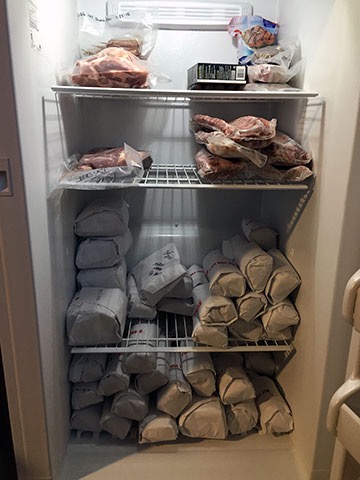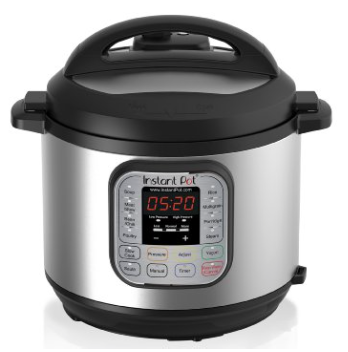A one-pot dinner in 15 minutes.

This looks a lot better than that orange stuff I used to eat.
Everyone loves macaroni and cheese, the ultimate comfort food. What’s better than home made?
I’ll admit it: for most of my life I’ve been hooked on Kraft Deluxe Macaroni and Cheese dinner. For years, it was almost a special treat to whip up a box of this unnaturally orange stuff at home. But with the rise of good mac and cheese and its popularity in restaurants, I started looking outside that blue box. And, after making this dish, I can’t see going back — ever.
This recipe is based on one I found in the Pressure Cooker Perfection cookbook by the folks at America’s Test Kitchens. It’s a great cookbook with nice color finished food photos — I’m a sucker for that in cookbooks — but it predates the Instant Pot I and so many of my friends have. Since I modified the recipe a bit for my own version, I figured I’d rewrite my version of it with Instant Pot-specific instructions. Here it is.
Ingredients
- 8 ounces (2 cups) elbow macaroni. I used large elbows but I suspect you could use small ones or any other similarly sized/shaped pasta.
- 2 cups water. I used cold water because the recipe didn’t specify otherwise.
- 1 teaspoon salt.
- 1/8 teaspoon cayenne pepper. You can omit this is you prefer not to have the spice.
- 1 teaspoon dry mustard. I used the full teaspoon and could really smell it when it was first cooking and wondered whether I should have cut back. But I couldn’t taste it in the finished product.
- 1 12-ounce can evaporated milk. I used whole milk, although the original recipe says 2% is okay. Use fat free at your own risk. Please remember that evaporated milk is not the same as sweetened condensed milk, although they’re usually together on supermarket shelves.
- 1 cup cooked chicken, chopped. I occasionally buy roasted chickens at the supermarket and, because I usually can’t eat a whole one by myself in two days, cut up the breast meat and freeze it in a vacuum-sealed packet. It’s perfect for recipes like this.
- 1/2 to 1 cup frozen peas. I love peas and aways have a bag in my freezer. I didn’t measure; I probably used a whole cup!
- 4 ounces (1 cup) sharp cheddar cheese, shredded. I bought it pre-shredded.
- 4 ounces (1 cup) Monterey Jack cheese, shredded. I couldn’t find it pre-shredded so I had to shred it myself. In hindsight, I realize I could have bought a pre-shredded mild cheddar/Monterey Jack mix the supermarket offered in 8-ounce packages.
Instructions
Mix macaroni, water, salt, pepper, and mustard in Instant Pot (or other pressure cooker).
- Cover and seal pot for pressure cooking.
- On Instant Pot, press Manual and set for 5 minutes. (On another pressure cooker, heat and cook at high pressure for five minutes.)
- When cooking is finished turn pressure cooker off, do a fast pressure release, and carefully remove lid.
- Stir pasta thoroughly. It should be mostly cooked with some water left in the pot.
- On Instant Pot, press Saute. (On another pressure cooker, heat to medium high.)
- Stir in milk, chicken, and peas.
- Cook until liquid is mostly gone and pasta is tender.
- Turn pressure cooker off and remove from heat.
- Stir in cheeses and serve.
This makes four good-sized servings, perfect for dinner.




